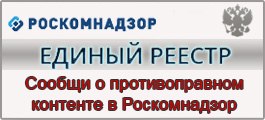С 8 по 14 июля 2024 года впервые пройдет Всероссийская неделя правовой помощи по вопросам защиты интересов семьи. Всероссийская неделя правовой помощи приурочена к проведению в...
Неделя правовой помощи
Онлайн-акция «Рисую Россию».
День России — это государственный праздник Российской Федерации, который отмечается ежегодно 12 июня. В этот день в 1990...
Информация для женщин, имеющих детей дошкольного возраста
В Тамбовской области реализуется Национальная стратегия действий в интересах женщин на 2023-2030 гг. (Распоряжение Правительства Российской Федерации от 28.04.2023 г. № 1104-р). Бесплатное обучение, переобучение, повышение...
Консультирование замещающих родителей.
В жизни замещающей семьи могут возникать ситуации, когда необходима помощь специалистов. Именно для этого существуют службы сопровождения. Их задача — помочь людям,...
Онлайн-акция «Рисую Россию».
12 июня самый молодой, но и самый торжественный национальный праздник - День России. Эта особенная дата для всего русского народа, день гордости...
День защиты детей.
1 июня отмечается Международный день защиты детей. Это один из самых старых международных праздников, его отмечают во всём мире с...
Школа кандидатов в замещающие родители.
28 мая закончились очередные занятия с группой кандидатов в замещающие родители. Обучающиеся получили свидетельства о прохождении подготовки лиц, желающих принять на воспитание...
Экскурсия на учебный аэродром.
24 мая текущего года дети из замещающих семей г. Мичуринска посетили с экскурсией — учебный аэродром, который расположен в 8,5 километрах от...
Совет замещающих семей.
В мае 2024 года состоялось очередное заседание совета замещающих семей (далее Совет) г. Мичуринска. Присутствующие были ознакомлены с проведённой работой...
Тренинг «Тропинка родительской любви».
В доброй и тёплой атмосфере, в мае в ТОГБУ «Центр поддержки семьи и помощи детям «Аистёнок», прошёл тренинг «Тропинка родительской любви». Целью...
















